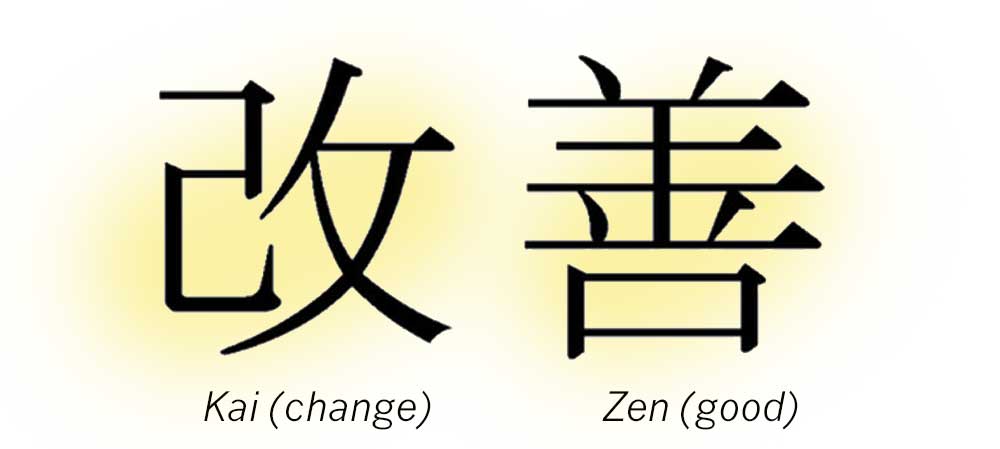Want to improve your company’s culture? Time is on your side. By taking a deliberate approach to gradual but continuous change, you’re able to accomplish your goals with greater success.
The world’s most respected and beloved companies weren’t built overnight. It took time and continuous improvement to get them to the point where they’ve become a household name and places where people don’t think twice about buying their products or using their services.
Technology continues to shape the way companies do business. If you blink, opportunities pass you by. If you’re not willing to make changes on a regular basis, you’ll fall behind the competition.
The key to sustainability is to remain relevant and to appear irreplaceable in the minds of your customers.
If you’re able to accomplish those two things, you’ll have a foothold in the business world and be able to implement changes throughout the year that better equip you to handle the fast pace in which our society evolves.
What is continuous improvement and how does it help companies succeed
Continuous improvement is also known as Kaizen. Kaizen refers to a principle adopted by businesses after World War II as a way to step up manufacturing. It comes from the Japanese words “Kai,” which means improvement, and “Zen,” which means good. When something is “Kaizen,” it’s constantly undergoing change as a form of improvement.
From a business perspective, Kaizen helps companies achieve the two aforementioned goals: They’re able to assess customers’ needs and fulfill them to remain relevant.
Companies are also able to come up with a marketing strategy that shapes the public viewpoint of what they have to offer. When a product or service feels irreplaceable to customers, they’re more likely to commit to buying it on a long-term basis. That’s why branding is such an important part of a company’s identity.

Using kaizen to improve your company’s culture on a continuous basis
In order to see all the good Kaizen brings to your company’s culture, there are things you’ll want to do to ignite continuous change.
The first is to stop seeing yourself and your managers as separate from the rest of your employees. It’s everyone’s job to innovate and implement change – every single person working for you at your company can do it.
Next, you’ll want to discuss improvements regularly. Holding short meetings before a work shift is a great way to keep everyone motivated and thinking creatively.
Valuing everyone’s ideas and insight creates a supportive and constantly evolving culture. When something deserves further exploration, longer meetings are scheduled to discuss its probability.
Being realistic about the goals your company has regarding Kaizen is key
It allows you to see how you compare to the competition as well as seeing the strength and weaknesses of the people in your team. When you’re able to assess what your company is physically capable of doing, you’re able to make changes that magnify those strengths and minimise the weaknesses, which is a great business strategy.
Everyone is then able to do their job better when they aren’t comparing themselves to their peers and they’re being valued by the company which hired them.
People are willing to step outside their comfort zone, try new things, and fail when there is little risk doing so. They know they won’t be shamed for their attempt but rather applauded for doing something different to help further the company’s success.
It may also be necessary to offer incentives to keep people thinking forward into the future. Having a measuring system for progress helps you to see where you stand when up against other businesses in the same industry. That way, you can offer intrinsic and extrinsic rewards whenever an occasion arises to do so.
When employees feel valued and acknowledged for the work that they have done, they’re more compelled to share new ideas as well as stay longer with your company which benefits you in generating change and reducing turnover.

Kaizen
Examples of good company culture and bad company culture
Like a superiorly-ran production line, some companies move smoothly because of the culture that they’ve built. Progress isn’t impeded because people don’t feel emotionally connected to their jobs. When all employees are tasked with work they feel capable of doing well, their rate of success soars.
Employee morale soars which lends to the process of continuous change because your team feels better equipped to adopt new ideas and exercise creativity to improve the business.
When you build trust in the workplace, many things happen. You become stronger as a unit and better able to withstand changes as customers adopt new habits and ideas of what they want and need out of life.
Bad blood, bad vibes, bad customer service, bad growth strategies
Bad company culture doesn’t recognise individual strengths or ideas. It lumps employees into categories based on job titles.
Upper management and owners are the only people with a say in the company which is tragic because untapped talent and unexplored ideas exist. Employees feel undervalued and unappreciated which leads to poor morale.
They’re afraid to speak up or make changes in how they work out of fear of losing their jobs. When mistakes are made, someone is blamed publicly which leads to them feeling angry, upset, and unwilling to do what is being asked of them to implement change.

Image: Unsplash
With bad company culture, it takes a spark to ignite a flame
Bad news travels fast and one disgruntled employee leads to another which leads to another. It doesn’t take long before nothing is being done to move the company forward because the people running the show don’t believe there is a future for them where they work.
Bad company culture is toxic, stagnant, and destined for failure. Companies who do not take responsibility for the culture they’ve created for employees will inevitably lose customers in the process.
After all, how does a person expect to be treated well by a company whose owners and managers treat their workers terribly?
The role kaizen plays and how it affects business operations
The role of continuous improvement or Kaizen keeps your business afloat while other companies shut their doors for good. With the fast pace at which life changes, it pays to know your customers and what they have come to expect from you.
The reason why iconic companies remain at the forefront of people’s minds is they’re consistently making their products and services better, more affordable, and easier to use.
Managers and owners who lead by example provide a blueprint of success for their employees. They model the type of behaviour and exhibit the expectations they have for everyone working for the company. This way, change is being demonstrated regularly for everyone to witness for their own selves.
On an individual basis, practicing Kaizen helps people improve one percent a day
Daily improvement collectively adds to your business success. If each person applied the principles of continuous change to the way they work, companies would benefit exponentially.
Each person would then feel responsible for their contribution and be willing to go above and beyond what was asked of them to help the company achieve its goals.
Kaizen makes businesses of all sizes stronger. You don’t need to own a corporation to benefit from continuous change. Even start-ups find that without momentum, they may not remain relevant for long.
In Summary
Being able to see things from a customer’s perspective allows you to adopt new ideas quickly. Honouring the feedback your employees provide helps you see potential problems or solutions you weren’t even aware of yourself.
If the ultimate goal is sustainability in a world where you’re competing hard for every dollar you make, it’s imperative you constantly work to improve your workplace culture by applying Kaizen and ensuring your customers and employees are part of the improvement process.
About the Author
Lisa Michaels is a freelance writer, editor and a striving content marketing consultant from Portland. Being self-employed, she does her best to stay on top of the current trends in business and tech. Feel free to connect with her on Twitter @LisaBMichaels.




